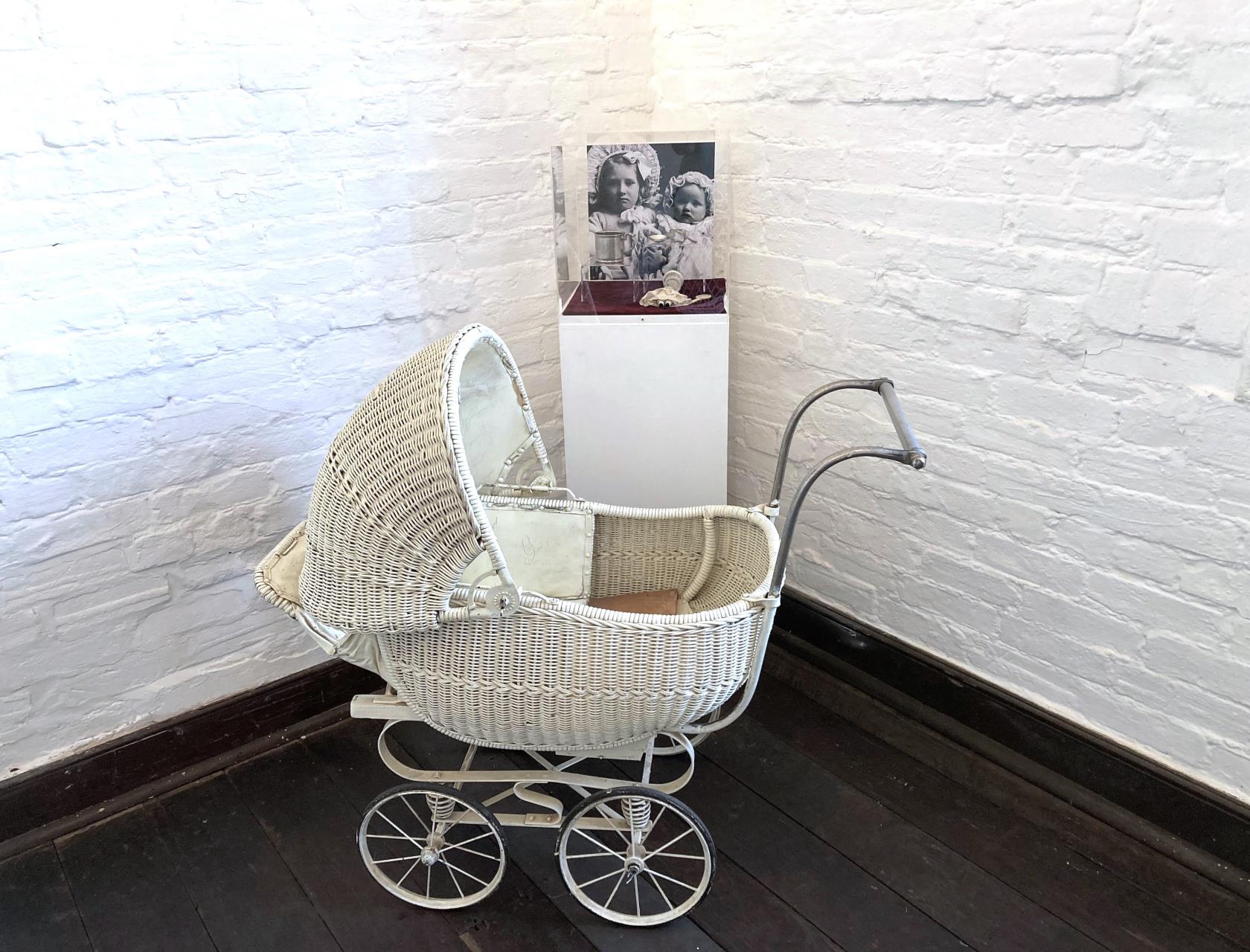Exhibitions
Welcome to Ballardong Noongar Country

Welcome to Ballardong Noongar Country introduces the cultural heritage of the local Ballardong Noongar people.
Special places and their traditional meanings are described and illustrated through photographs and words from a Ballardong Elder.
Guerilla Warfare, Clashes and Changes

Guerilla Warfare, Clashes and Changes for the Ballardong people were the inevitable result of white settlement. Early conflicts and some early settler artefacts tell this story.
A New Start

A New Start explains why the earliest settlers came here and what they did. Real Australiana made from bush-cut wood or packing cases contrasts with precious pieces of china and glass carefully transported from England during the nineteenth century.
Convicts Arrive

Convicts Arrive. The poignant love story resulting in transportation for John Wroth, clerk to the Convict Depot on this site, is revealed in this display which includes convict handcuffs and bricks stamped with the broad arrow.
The Guard’s Grave
The Guard’s Grave gives a glimpse into the lives of the Pensioner Guards who accompanied the unwilling emigrants.
What Shaped the Town We See Today

What Shaped the Town We See Today. Intrepid explorers, the rush for gold and farming wealth all left their mark upon York’s landscape.
See how routes, transport and accommodation have changed – or not - in this fascinating section of the museum.
Settlers Gathered, Grazed and Grew…and Groaned!

Settlers Gathered, Grazed and Grew…and Groaned!
Which tree was called ‘ the poor man’s moneybox’ and what would you do with a parrot and a old boot? Find out how agriculture progressed and prospered – and the pitfalls of farming today.
Ballardong Noongar Budjar

Ballardong Noongar Budjar. Budjar means ‘Country’ the homeland or place where Noongar people belong.
This display explains why it matters and the effect of settler farming on the Ballardong Noongar people.
From China and Albania

From China and Albania came migrants striving for a better life, who made market gardens here in York.
The poignant tale of two Chinese brothers is illustrated with some of their home-made equipment….. and a very sinister medicine jar!
Business Boomed

Business Boomed. York had ‘almost every necessity being procurable’ in its shops as well as newspapers, mills, trades and industries of all kinds.
A fabulous collection of leisure-time amusements contrast with working life in the nineteenth century.
Schooldays

Schooldays. If you survived the infant mortality rates would you fancy walking to school in bare feet through the bush?
See slates and pencils, tin toys and a tiny doll’s house and try out a stereoscope for an insight into past York children’s lives.
…And Sundays

…And Sundays. Many settlers hoped for a society with greater religious freedom. Here in York, many faiths flourished and grew; now you can call the churchgoers yourself by ringing the 1846 bell of St. Johns. Yes, the real thing!
Four Women’s Stories

Four Women’s Stories provides a fascinating insight into the homes, work, leisure time and personal struggles of four women from 1870 to the present day.
The lives and times of four women from different eras and backgrounds have been told through an eye-opening new exhibition.
Thought-provoking stories are told in their own words and illustrated with a stunning selection of objects and furniture.
‘In Leisurely Style’ gorgeous croquet and ball gowns worn by the wealthy are starkly contrasted with the centrepiece of ‘Everyday Lives’ – a bush picnic for the daughters of a struggling farmer.
‘Lorna’s Story’ tells one Aboriginal woman’s life story whilst ‘The Reserve’ describes the harsh living conditions whilst growing up on the York Aboriginal Reserve.
The Original Kitchen

The Original Kitchen. Peer down at the original convict-built foundations in a dramatic floodlit viewing hole in the floor of the original kitchen.
Cooking implements fill the fireplace and there are plenty of reminders about the work involved in washday, butter-making, cooking and decorating the home.
Technology has changed, but how many forerunners of today’s gadgets can you recognise?
Matrons, Nurses, Mothers

Matrons, Nurses, Mothers explores the lives of women who lived, worked and gave birth in the building now known as the Residency Museum.
Highlights in this exhibition include a display of last century studio portraits of local mothers and their young children. Offering a different slant on the building’s former uses, this exhibition remembers a time in its history when Matrons reigned supreme over their charges and babies not convicts were the focus of the day.